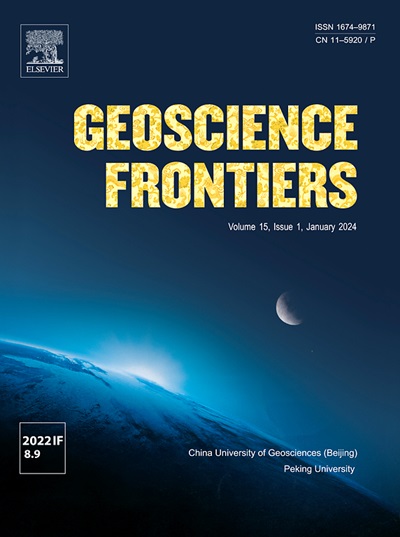Global projections of future landslide susceptibility under climate change
IF 8.9
1区 地球科学
Q1 GEOSCIENCES, MULTIDISCIPLINARY
引用次数: 0
Abstract
Landslides pose a significant threat to both human society and environmental sustainability, yet, their spatiotemporal evolution and impacts on global scales in the context of a warming climate remain poorly understood. In this study, we projected global landslide susceptibility under four shared socioeconomic pathways (SSPs) from 2021 to 2100, utilizing multiple machine learning models based on precipitation data from the Coupled Model Intercomparison Project Phase 6 (CMIP6) Global Climate Models (GCMs) and static metrics. Our results indicate an overall upward trend in global landslide susceptibility under the SSPs compared to the baseline period (2001–2020), with the most significant increase of about 1% in the very far future (2081–2100) under the high emissions scenario (SSP5-8.5). Currently, approximately 13% of the world’s land area is at very high risk of landslide, mainly in the Cordillera of the Americas and the Andes in South America, the Alps in Europe, the Ethiopian Highlands in Africa, the Himalayas in Asia, and the countries of East and South-East Asia. Notably, India is the country most adversely affected by climate change, particularly during 2081–2100 under SSP3-7.0, with approximately 590 million people—23 times the global average—living in areas categorized as having very high susceptibility.

气候变化下未来滑坡易感性的全球预估
滑坡对人类社会和环境的可持续性构成重大威胁,但在气候变暖背景下,其时空演变及其在全球尺度上的影响尚不清楚。在这项研究中,我们利用基于耦合模式比对项目第6阶段(CMIP6)全球气候模型(GCMs)和静态指标的降水数据的多个机器学习模型,预测了2021年至2100年四个共享社会经济路径(ssp)下的全球滑坡易感性。结果表明,与基线期(2001-2020年)相比,ssp情景下全球滑坡易感性总体呈上升趋势,高排放情景(SSP5-8.5)下的极远未来(2081-2100年)最显著增长约1%。目前,世界上大约13%的土地面积处于非常高的滑坡风险,主要集中在美洲的科迪勒拉和南美洲的安第斯山脉,欧洲的阿尔卑斯山,非洲的埃塞俄比亚高地,亚洲的喜马拉雅山脉以及东亚和东南亚国家。值得注意的是,印度是受气候变化影响最严重的国家,特别是在2081-2100年SSP3-7.0的情况下,大约有5.9亿人——是全球平均水平的23倍——生活在极易受气候变化影响的地区。
本文章由计算机程序翻译,如有差异,请以英文原文为准。
求助全文
约1分钟内获得全文
求助全文
来源期刊

Geoscience frontiers
Earth and Planetary Sciences-General Earth and Planetary Sciences
CiteScore
17.80
自引率
3.40%
发文量
147
审稿时长
35 days
期刊介绍:
Geoscience Frontiers (GSF) is the Journal of China University of Geosciences (Beijing) and Peking University. It publishes peer-reviewed research articles and reviews in interdisciplinary fields of Earth and Planetary Sciences. GSF covers various research areas including petrology and geochemistry, lithospheric architecture and mantle dynamics, global tectonics, economic geology and fuel exploration, geophysics, stratigraphy and paleontology, environmental and engineering geology, astrogeology, and the nexus of resources-energy-emissions-climate under Sustainable Development Goals. The journal aims to bridge innovative, provocative, and challenging concepts and models in these fields, providing insights on correlations and evolution.
 求助内容:
求助内容: 应助结果提醒方式:
应助结果提醒方式:


